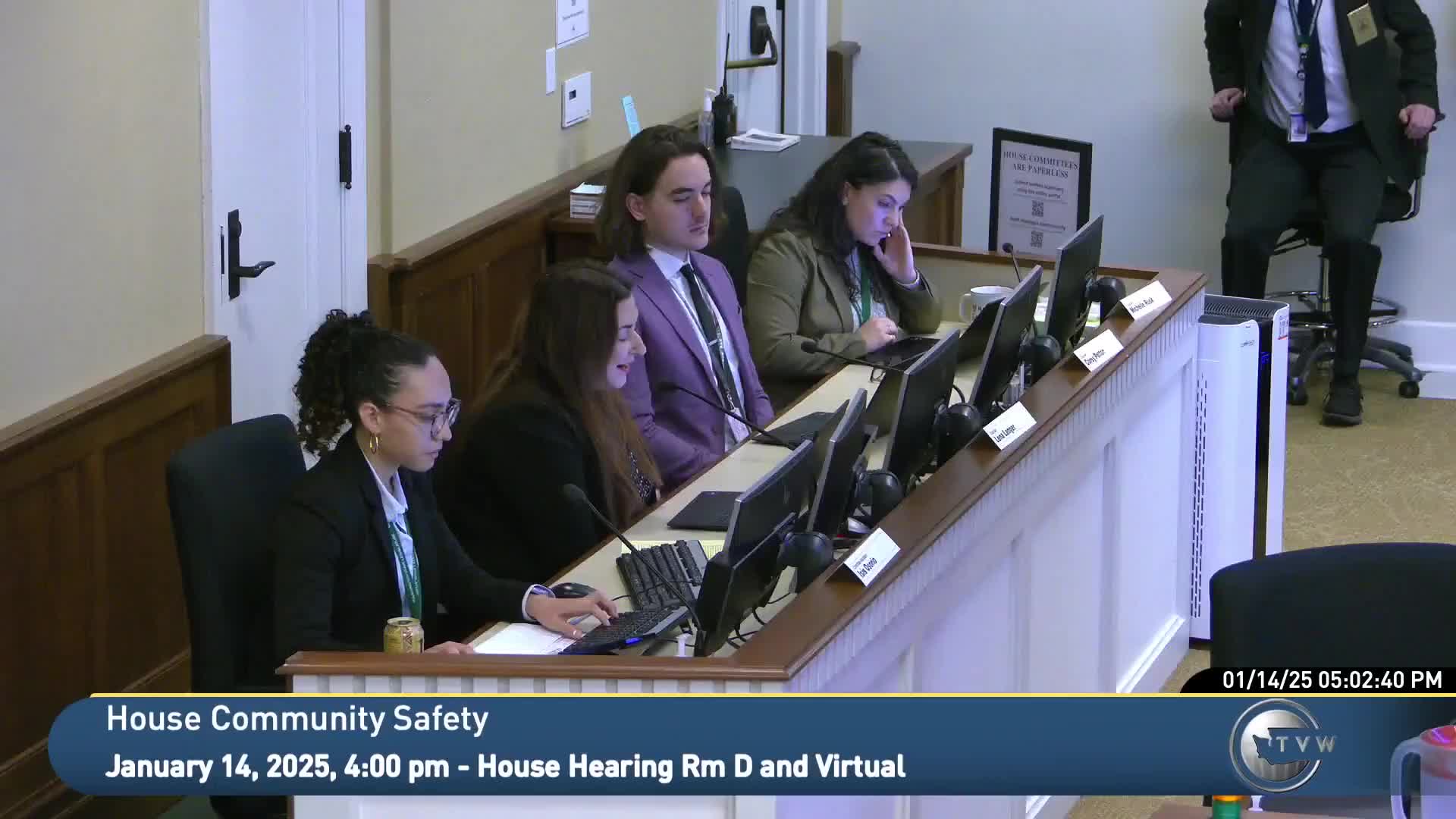DOR: Working Families Tax Credit expanded in year two; refunds up 22% and outreach scales statewide
January 14, 2025 | Community Safety, Justice, & Reentry, House of Representatives, Legislative Sessions, Washington
This article was created by AI summarizing key points discussed. AI makes mistakes, so for full details and context, please refer to the video of the full meeting. Please report any errors so we can fix them. Report an error »

Steve Ewing, legislative and external affairs liaison for the Washington State Department of Revenue, presented a year-two update on the Working Families Tax Credit (WFTC) to the House Finance Committee on Jan. 14. The WFTC is a state-level credit for low- and moderate-income households modeled on the federal Earned Income Tax Credit; the application window opens Feb. 1 and runs through Dec. 31.
Ewing said the Department estimates about 350,000 eligible households statewide. Year-two outcomes included a 22% increase in refunded applications and a 28% increase in dollars refunded compared with 2023. Legislative changes (House Bill 1477, enacted in 2023) expanded eligibility timing to allow applicants to claim refunds for up to three prior years, driving additional applications and roughly $13 million in additional refunds tied to that change.
Key operational changes in year two included onboarding additional modernized e-file (MEF) vendors (four new vendors, bringing the total to 16), launching prepaid debit cards as an alternative to checks or direct deposit, adding Spanish-language written correspondence, and a multimedia outreach campaign coupled with $5 million in community outreach grants to 27 organizations covering most of the state. DOR reported two-thirds of refunds were issued within 30 days in year two (up from roughly half in year one), and the average refund was about $750. Ewing said about 80% of refunds went to households with children, reaching more than 1.1 million children in year two.
DOR credited partnerships with other state agencies—DSHS, HCA and others—for mailings and outreach that circumvent data-sharing limits; those partners mailed hundreds of thousands of notices to potential eligible households. DOR also noted it will onboard TurboTax as a MEF vendor for the next filing season and is pursuing deeper integration with the IRS Direct File pilot for future filing seasons. Ewing said DOR is continuing outreach and technical work to increase participation and streamline application processing.
Committee members asked technical questions about eligibility definitions (age thresholds that align with federal EITC rules) and ITIN-holder participation; DOR said about 9% of refunds went to households including at least one ITIN holder, often independent contractors or self-employed individuals. DOR said the program is unusual because Washington is a non-income-tax state administering an income-mirroring credit and that the agency will continue improvements before the next filing period.
Ewing said the Department estimates about 350,000 eligible households statewide. Year-two outcomes included a 22% increase in refunded applications and a 28% increase in dollars refunded compared with 2023. Legislative changes (House Bill 1477, enacted in 2023) expanded eligibility timing to allow applicants to claim refunds for up to three prior years, driving additional applications and roughly $13 million in additional refunds tied to that change.
Key operational changes in year two included onboarding additional modernized e-file (MEF) vendors (four new vendors, bringing the total to 16), launching prepaid debit cards as an alternative to checks or direct deposit, adding Spanish-language written correspondence, and a multimedia outreach campaign coupled with $5 million in community outreach grants to 27 organizations covering most of the state. DOR reported two-thirds of refunds were issued within 30 days in year two (up from roughly half in year one), and the average refund was about $750. Ewing said about 80% of refunds went to households with children, reaching more than 1.1 million children in year two.
DOR credited partnerships with other state agencies—DSHS, HCA and others—for mailings and outreach that circumvent data-sharing limits; those partners mailed hundreds of thousands of notices to potential eligible households. DOR also noted it will onboard TurboTax as a MEF vendor for the next filing season and is pursuing deeper integration with the IRS Direct File pilot for future filing seasons. Ewing said DOR is continuing outreach and technical work to increase participation and streamline application processing.
Committee members asked technical questions about eligibility definitions (age thresholds that align with federal EITC rules) and ITIN-holder participation; DOR said about 9% of refunds went to households including at least one ITIN holder, often independent contractors or self-employed individuals. DOR said the program is unusual because Washington is a non-income-tax state administering an income-mirroring credit and that the agency will continue improvements before the next filing period.
View full meeting
This article is based on a recent meeting—watch the full video and explore the complete transcript for deeper insights into the discussion.
View full meeting
